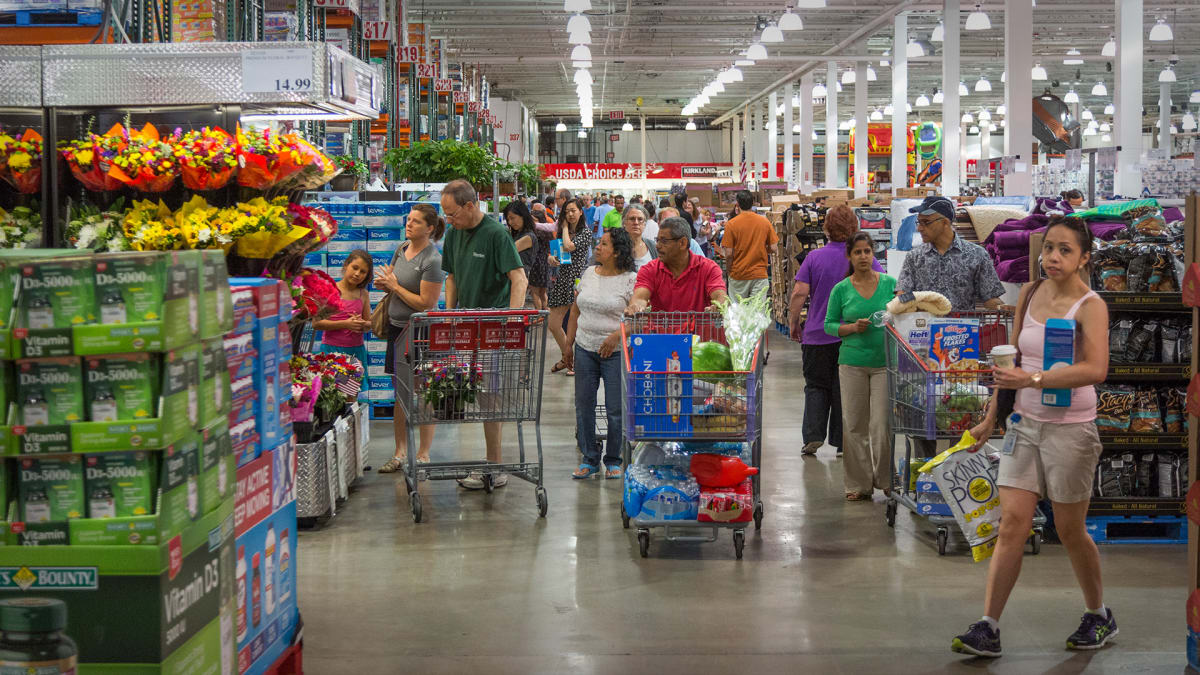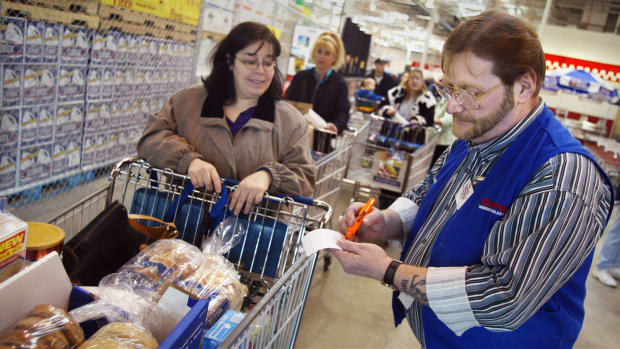
Grocery prices have been higher, but people have very little perception of what that means because inflation isn't uniform, especially in grocery stores.
Yes, the price of eggs skyrocketed and at times both beef and pork cost well more than they usually do. But most people don't keep careful track of their grocery bills. They know what they spend each week but don't really know how those outlays break down specifically.
DON'T MISS: Disney Has a Wild New Vacation Offer
If you normally spend $150 a week at the grocery store -- whether at Walmart (WMT), a regional grocery chain, or a Target (TGT) -- and your bill comes to $200, that feels like massive inflation. What you may not realize is that while everything was a little more expensive, a few items spiked.
It's confusing and it has led many Americans to believe that things are much worse than they are.
"Americans believe that grocery retailers are earning a 35.2% net profit margin, 14 times higher than grocers’ actual net profit margin average of 2.5%, and that food-at-home inflation is 24.3%, double the annual rate reported by the U.S. Bureau of Labor Statistics," according to February's dunnhumby Consumer Trends Tracker.
Retailers have also done little to communicate how they set prices. That's because as inflation has come down, most chains don't lower shelf prices at the rate at which their costs decline.
That's not to say Walmart, Target, and your local grocery chain are gouging you, but in some cases they're making up for the fact that they didn't pass on some of the wholesale-price increases they faced when inflation was at its worst.
Costco (COST) has been honest and transparent when it comes to inflation and how the warehouse club sets prices.
Chief Financial Officer Richard Galanti. during his company's third-quarter-earnings call, made clear that while many Americans still feel prices are very high, his chain has seen inflation start to come down in a meaningful way.

Image source: Tim Boyle/Getty Images
Costco Sees Lower Costs on Key Grocery Items
Costco does not set its prices in the way that most other retailers do. Because the chain endeavors to deliver the best possible value to its members, it ensures that that's what it's doing relative to Walmart, Target, Amazon, and other retailers.
During the worst of inflation, that meant the chain would lean on vendors to eat some of the rising prices and sometimes it would do so as well. Costco doesn't have a set profit margin for each item it sells; instead. it looks to offer good value when shoppers compare it with the other chains.
Now, Galanti offered good news on inflation.
"Inflation continues to abate somewhat," he said.
"If you go back a year ago to the fourth quarter of '22 last summer, we had estimated that year over year inflation at the time was up 8%. And by Q1 and Q2, it was down to 6% and 7% and then 5% and 6%. In this quarter, we're estimating the year over year inflation in the 3% to 4% range."
More important, the CFO said he was seeing price drops in the grocery items that customers have to buy.
"We continue to see improvements in many items, notably food items like nuts, eggs and meat, as well as items that include, as part of their components, commodities like steel and resins on the nonfood side," he added.
Again: When Costco sets prices, it looks at not just its costs but at competitors' prices as well.
"When we do comp shops against our direct warehouse club competitors, as well as different components, whether it's retail food or general merchandise on the buildings, home improvement side, we feel very good about our competitive position and what we're doing to do that," Galanti added.
Receive full access to real-time market analysis along with stock, commodities, and options trading recommendations. Sign up for Real Money Pro now.







